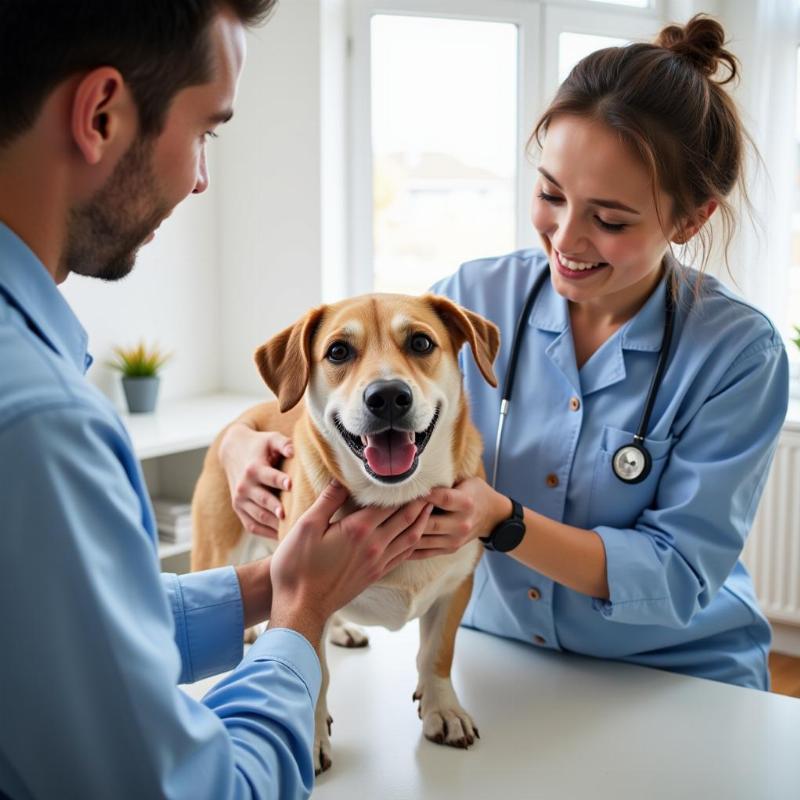Gold bond dog hot spot is a common search term for pet owners struggling with itchy, irritated skin on their furry friends. Hot spots, also known as acute moist dermatitis, can be incredibly uncomfortable for dogs and can quickly worsen if left untreated. While Gold Bond is a popular remedy for human skin irritations, its use on dogs requires careful consideration. This guide will explore the safety and effectiveness of using Gold Bond on dog hot spots, along with alternative treatments and preventative measures.
Understanding Dog Hot Spots
Hot spots often appear suddenly as red, inflamed patches of skin that are moist and oozing. They are typically caused by a localized bacterial infection, often triggered by excessive scratching, licking, or chewing due to underlying allergies, parasites, or other irritations. The constant moisture and trauma to the skin create a breeding ground for bacteria, leading to a rapid spread of the infection. Common locations for hot spots include the head, neck, legs, and hips.
Can I Use Gold Bond on My Dog’s Hot Spot?
The question of whether or not you can use Gold Bond on your dog’s hot spot isn’t a simple yes or no. While some formulations of Gold Bond might offer temporary relief from itching, there are potential risks involved. Some Gold Bond products contain ingredients like menthol, camphor, and salicylic acid, which can be toxic to dogs if ingested, especially if they lick the treated area. Additionally, the talc in some Gold Bond powders can be irritating to a dog’s respiratory system. Therefore, it’s crucial to consult with your veterinarian before applying any Gold Bond product to your dog’s hot spot. They can assess the severity of the condition and recommend safe and effective treatment options.
Safer Alternatives to Gold Bond for Dog Hot Spots
Several vet-approved alternatives to Gold Bond can effectively treat dog hot spots. These include:
- Veterinary Antiseptic Sprays and Ointments: These products are specifically formulated for use on dogs and can help cleanse and soothe the affected area.
- Antihistamines: If allergies are contributing to the hot spot, your veterinarian may prescribe antihistamines to reduce itching and inflammation.
- Antibiotics: In cases of severe bacterial infection, antibiotics may be necessary to clear the infection.
- Short-Term Use of Elizabethan Collars (E-collars): These collars prevent your dog from licking or chewing the hot spot, allowing it to heal.
Preventing Dog Hot Spots
Preventing hot spots is often easier than treating them. Here are some preventative measures:
- Regular Grooming: Keeping your dog’s coat clean and free of mats can help prevent skin irritation.
- Parasite Control: Fleas, ticks, and mites can cause intense itching, leading to hot spots. Regular flea and tick prevention is essential.
- Allergy Management: If your dog has allergies, work with your veterinarian to identify and manage the allergens.
- Maintaining a Healthy Diet: A balanced diet supports healthy skin and coat, reducing the risk of skin issues.
When to See a Veterinarian
While some minor hot spots may resolve with at-home care, it’s always best to consult your veterinarian if you notice a hot spot on your dog. They can accurately diagnose the underlying cause and recommend the most appropriate treatment plan. Seek immediate veterinary attention if the hot spot is large, spreading rapidly, or accompanied by other symptoms such as fever or lethargy.
 Dog Getting a Checkup at the Veterinarian
Dog Getting a Checkup at the Veterinarian
Conclusion
While Gold Bond might seem like a quick fix for your dog’s hot spot, it’s crucial to prioritize their safety and consult with your veterinarian before applying any human medication. Numerous safe and effective alternatives are available, and preventative measures can significantly reduce the risk of hot spots developing in the first place. By understanding the causes and treatment options for hot spots, you can help your furry friend stay comfortable and healthy. Remember, a proactive approach to skincare is key to preventing these uncomfortable and often painful skin irritations.
FAQs
- What does a dog hot spot look like? Hot spots appear as red, inflamed, moist, and often oozing patches of skin.
- What causes hot spots on dogs? They are typically caused by bacterial infections triggered by excessive licking, chewing, or scratching due to underlying allergies, parasites, or other irritations.
- Is Gold Bond safe for all dogs? No, some ingredients in Gold Bond can be toxic to dogs if ingested. Consult your veterinarian before using it.
- How can I prevent my dog from getting hot spots? Regular grooming, parasite control, allergy management, and a healthy diet can help prevent hot spots.
- When should I take my dog to the vet for a hot spot? Consult your vet if you notice a hot spot, especially if it’s large, spreading rapidly, or accompanied by other symptoms.
- Can I use home remedies for my dog’s hot spot? While some home remedies may provide temporary relief, it’s best to consult your vet for a proper diagnosis and treatment plan.
- How long does it take for a dog hot spot to heal? With proper treatment, most hot spots heal within a week or two.
Beautdogs.us is your premier online resource for comprehensive dog care information, breed-specific advice, and product recommendations. Whether you’re a new dog owner or a seasoned expert, Beautdogs.us provides expert insights and practical tips to help you navigate the world of dog ownership. From understanding common health concerns like hot spots to selecting the best products for your furry friend, we’re dedicated to empowering you with the knowledge you need. Contact us today for personalized advice and support! Email: [email protected], Phone: +1 501-555-7529. Visit Beautdogs.us for more information.